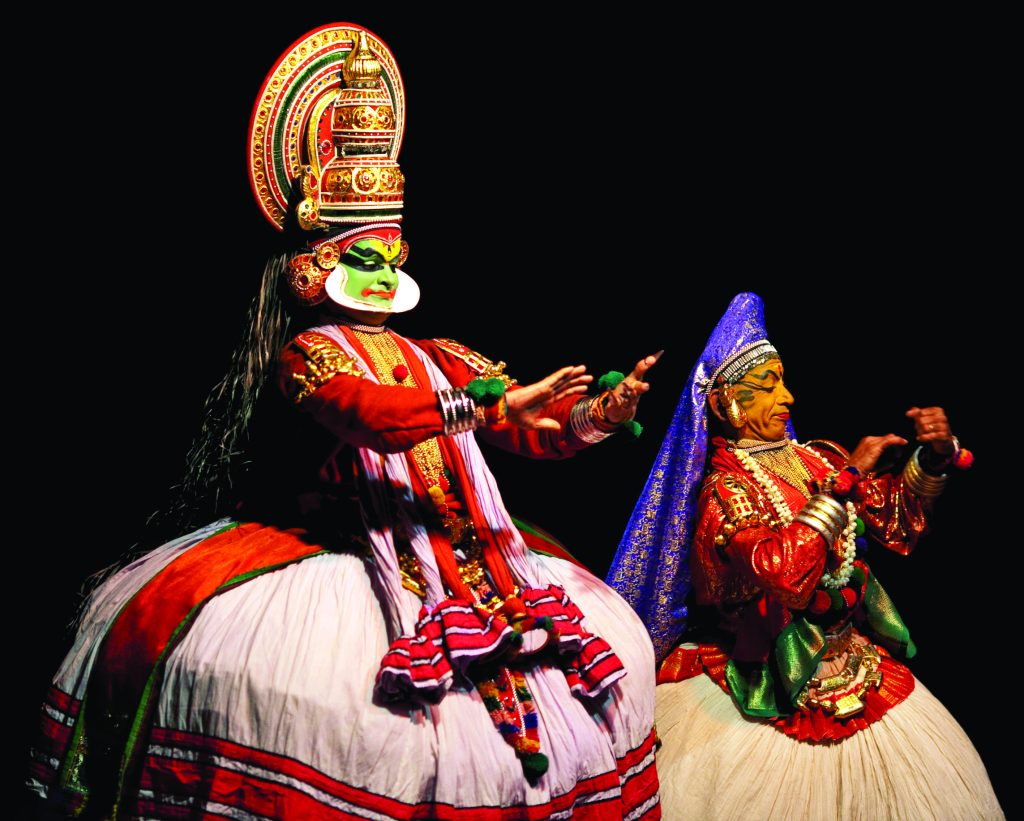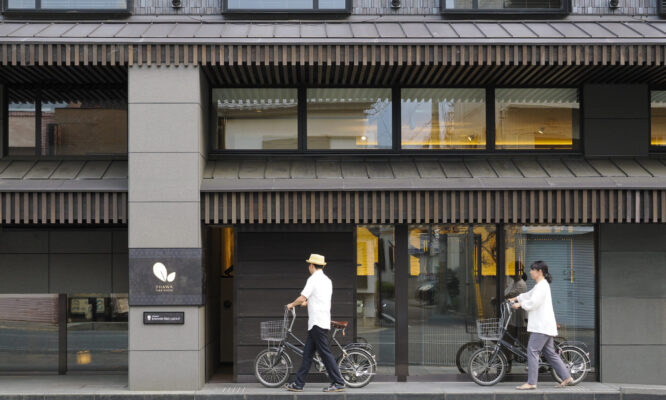Known for its palm-fringed backwaters, wildlife sanctuaries and charming villages, multicultural Kochi is the gateway to India’s Kerala.
Words Anna Phipps Photography 123rf

Promising exotic spices, Kerala has attracted travellers and traders from all over the world for centuries. The lucrative spice trade first brought Chinese and Arabian traders to the Malabar Coast, and then the Portuguese, Dutch and British. Nowhere else in India showcases such an enchanting cultural melting pot as Fort Cochin with its Chinese fishing nets, historic synagogue, mosques, temples and crumbling Portuguese, Dutch and British colonial-era houses and churches.

Serene Kerala feels a world away from the rest of India. Kochi, formerly known as Cochin, is a large, modern Indian city that is a lot cleaner and less hectic than cities like Delhi and Mumbai. Most visitors make a beeline across the water to Fort Cochin. Although the 16th-century fort is no longer there, this is still the most atmospheric and interesting part to explore, where most of the sights, cafés and shops are located, along with some fabulous heritage hotels and homestays.
The giant Chinese fishing nets on the shore at the tip of Fort Cochin are the iconic emblems of Cochin and are at their most photogenic at sunset. These impressive, spider-like cantilever contraptions are a legacy from Chinese traders. They date back to about 1400 and require at least four people to operate. Even though modern fishing methods have made these nets mostly redundant, you can still see them in operation and even try them yourself (for a small tip).

Fort Cochin was the first European township in India, so take a look at the impressive Santa Cruz Basilica and St Francis Church. Dating back to 1503, St Francis Church is India’s oldest European church and was once the resting place of famous Portuguese explorer Vasco da Gama.

One of Fort Cochin’s biggest delights is simply wandering and exploring the old streets, the synagogue, colourful houses, arty shops and cafés in Jew Town and Mattancherry. The small but beautiful 450-year-old Pardesi Jewish synagogue features exquisite chandeliers and tiling as well as a small but interesting exhibition of paintings describing the role the Jews played in Cochin. The synagogue is right in the middle of Jew Town and the bustling old port area. It’s a fascinating area to stroll around and shop for souvenirs as many old spice warehouses are now shops and cafés selling spices, tea, antiques, colourful shawls and handicrafts.
In the heart of Jew Town, the Mattancherry Palace (also known as the Dutch Palace after it was renovated by the Dutch in 1663) is now a small but interesting museum. Mattancherry was presented as a goodwill gift from the Portuguese in 1555 to the Raja (King) of Cochin, probably to sweeten up trading privileges. The wooden palace’s exhibits help bring to life the multicultural history of Cochin; the highlight is the intricate and well-preserved Hindu murals depicting the famous epic of the Ramayana.

To learn more about Kerala’s history, take a hair-raising rickshaw ride to the outskirts of modern Kochi city and visit the impressive Kerala Folklore Museum. This towering, traditional-style wooden Keralan Palace is home to a dizzying array of Keralan antiquities and artefacts; it also hosts performances upstairs.

Evenings in Fort Cochin are low-key and a great time to take in Kerala’s traditional cuisine and dance. Kerala’s famous traditional dance form, Kathakali, dates to the 17th century and is as enchanting as it is unique. The colourful, elaborate makeup and costumes and subtle yet incredible facial expressions provide a fascinating experience. It’s wise to opt for a performance specially put on for tourists as traditionally these dances can last for many hours and can be hard to follow at first. The Kerala Kathakali Centre has nightly performances, and if you arrive early, you’ll also get an interesting peek behind the scenes to watch the makeup being applied and get a demonstration of the movements and facial expressions, so you’ll have a better understanding and appreciation of the performance.

The Kerala Kathakali Centre also hosts performances of Kalarippayat, one of the oldest and most scientific martial art forms in the world, which also offers dangerously breath-taking entertainment due to the dramatic use of daggers, swords, spears and maces.

Due to its abundance of spices and medicinal plants, Kerala is also the home of Ayurveda, which literally means ‘The Science of Life’. Ayurveda is an ancient, natural healing science that has been practised in India for over 5,000 years. A relaxing massage is an easy entrance into the world of Ayurveda, and as India is the birthplace of yoga, why not try a hatha yoga class.
Fort Cochin’s shores are a nice spot for a sunset stroll and people-watching with a backdrop of the fishing nets, but for a beach day, take the short ferry journey to Vypeen Island to relax on its sandy stretch of beaches and to visit Pallippuram Fort. Built in 1503 by the Portuguese, this is the oldest existing European fort in India.

Kochi makes a great jumping-off point for exploring the rest of Kerala. One thing you absolutely can’t miss is the Kerala backwaters, a system of canals and lagoons stretching 900 kilometres across Kerala, lined by palm trees of a thousand shades of emerald, paddy fields and colourful houses. The backwaters are within easy reach of Kochi and make a wonderful day trip.

Thatched barges called kettuvallams used to carry spices toward ports on the Arabian sea; nowadays, most kettuvallams have been transformed into luxurious house boats. Cruising along these languid backwaters is one of the most relaxing experiences in the whole of India and offers the chance to witness a way of life that seems unchanged for centuries.
Traditional Keralan cuisine bursts with flavour due to the generous use of coconut, chilli, spices and fresh seafood. Influences from European and Arabic traders also mean there are more meat dishes available here than in many other parts of India. Fusion dishes are popular too. You can also try your hand at mastering the cuisine yourself at one of the many cooking classes in Fort Cochin.

For super-fresh seafood, stroll along the shore front by the fishing nets and take your pick from the day’s catch. Simply take your purchases to one of the simple street restaurants nearby on Tower Road, where they will cook and serve it for you. For the luxe experience, try the Rice Boat, a stationary kettuvalam boat restaurant at the Taj Malabar Resort. Juicy seafood with a spicy, coconutty twist and glorious views over the water make this the best fine-dining seafood restaurant in Kochi.
Also don’t miss sampling a traditional Keralan thali, also called a sadhya (meaning banquet), a tasty mixture of curries, rice, pickles, curd, sambhar, poppadum and more. It’s served on a banana leaf and traditionally eaten with hands only, but most restaurants will give tourists cutlery if they request it. Malabar Junction at the Malabar House Heritage Hotel is one of the best restaurants in Fort Cochin and a great place to try innovative Keralan and Mediterranean-influenced dishes and wines with fresh, local, organic produce.
Interesting Facts
- Kochi’s colonial name is Cochin, but it is still widely used today. Mainland Kochi is also known as Ernakulam.
- Most tourist attractions are located across the water in historic Fort Cochin, which is also the first European township in India.
- Spices put Kerala on the map in the 14th century. Today, Kochi’s Spice Exchange handles over 90 percent of the pepper and spice trade in the whole of India.
- Kerala is tropical and humid. The best time to visit is in winter between November and February when the weather is dry and cool.
- Malayalam, with its flamboyant and fun script, is the official language of Kerala but English is widely spoken.
- Alcohol is highly regulated by the Kerala government. Aside from luxury hotels, few establishments in Kerala have a licence to serve alcohol, although many places may serve you a ‘special tea’ (beer hidden in a tea cup) if you ask nicely.









